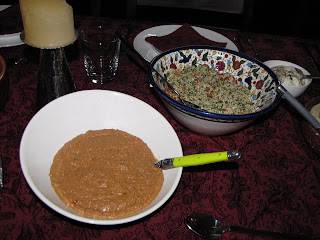In the meantime, here's an article about the recent Indian Grand Prix (from "The Diplomat" website):
Formula 1 Meets Poverty
By Sanjay Kumar
October 31, 2011

India is a complex country beset with contradictions. This was no clearer in evidence than with the country’s hosting of its first Formula One race at the weekend, an event that divided opinion here.
Greater Noida, on the outskirts of New Delhi, falls under the state of Uttar Pradesh. UP, as it’s commonly known, is one of the poorest parts of India. Hundreds of people have already died from an outbreak of encephalitis this year, while many hundreds more are struggling for their lives in poorly funded hospitals without access to adequate medication. Yet despite the failure to allocate sufficient funds to medical care, the other side of the state has just played host to an event that cost hundreds of millions of dollars to put together.
The Buddh International Circuit, which was built for this event, sits on land that was acquired under controversial circumstances. In 2007, the state government bought the land from local farmers, supposedly for the development of roads and industry. However, it sold the land to a private developer, Jaypee Group, at a hefty profit.
UP Chief Minister Mayawati is a Dalit (once known as the untouchable caste) and claims to represent the interests of a community that has historically been marginalized in both economic and political terms. Yet for some reason she exempted Jaypee Group, which was responsible for the Formula One track, from paying entertainment tax.
During my visit to the circuit this month, I spoke to Mohan Singh, who was watering parts of the track. He told me that his village, which is just five kilometers from the circuit, doesn’t have a proper water supply. He added that his wife walks at least two kilometers a day to fetch drinking water.
Such stories beg the question of what kind of message we are sending to the outside world. In a country where malnutrition rates are in some areas comparable with those in sub-Saharan Africa, and where millions of poor children can’t get a good education, why are we holding an event that the average Indian simply can’t afford?
The founding chairman of the Jaypee Group, Jaiprakash Gaur, has said the event is about national pride. ‘The world's perception of India is going to change after the Grand Prix,’ he is quoted by Reuters as saying. ‘People will forget what happened because of the Commonwealth Games.’
But as political commentator Paranjoy Guha Thakurta also told Reuters, this event, in many ways, actually epitomizes what is wrong with this country.
In a way, the whole F1 debate shouldn’t come as a surprise – it’s all part of India’s Dr Jekyll and Mr Hyde personality. On the one hand, India is happy to receive poverty aid from countries such as Japan. Yet it also has one of the highest number of billionaires in the world.
One of the most famous of these is Mukesh Ambani, who reportedly spent billions of dollars building a house in Mumbai not far from a cluster of slums. Yet it’s now being said that he has decided he doesn’t want to move into the 27-story building, with some reports suggesting it's because the structure doesn’t conform to Vastu Shastra (a belief that a dwelling’s architectural alignment should create spiritual harmony).
India undoubtedly needs its billionaires. But at the same time, it’s troubling that so many of India’s wealthy businessmen are forsaking their social responsibilities. The laborers that build their mansions and work for their firms need more than meager wages – they need a genuine chance to realize their aspirations.
F1 events shouldn’t exist side-by-side with abject poverty.
Image credit: Carol Mitchell



















